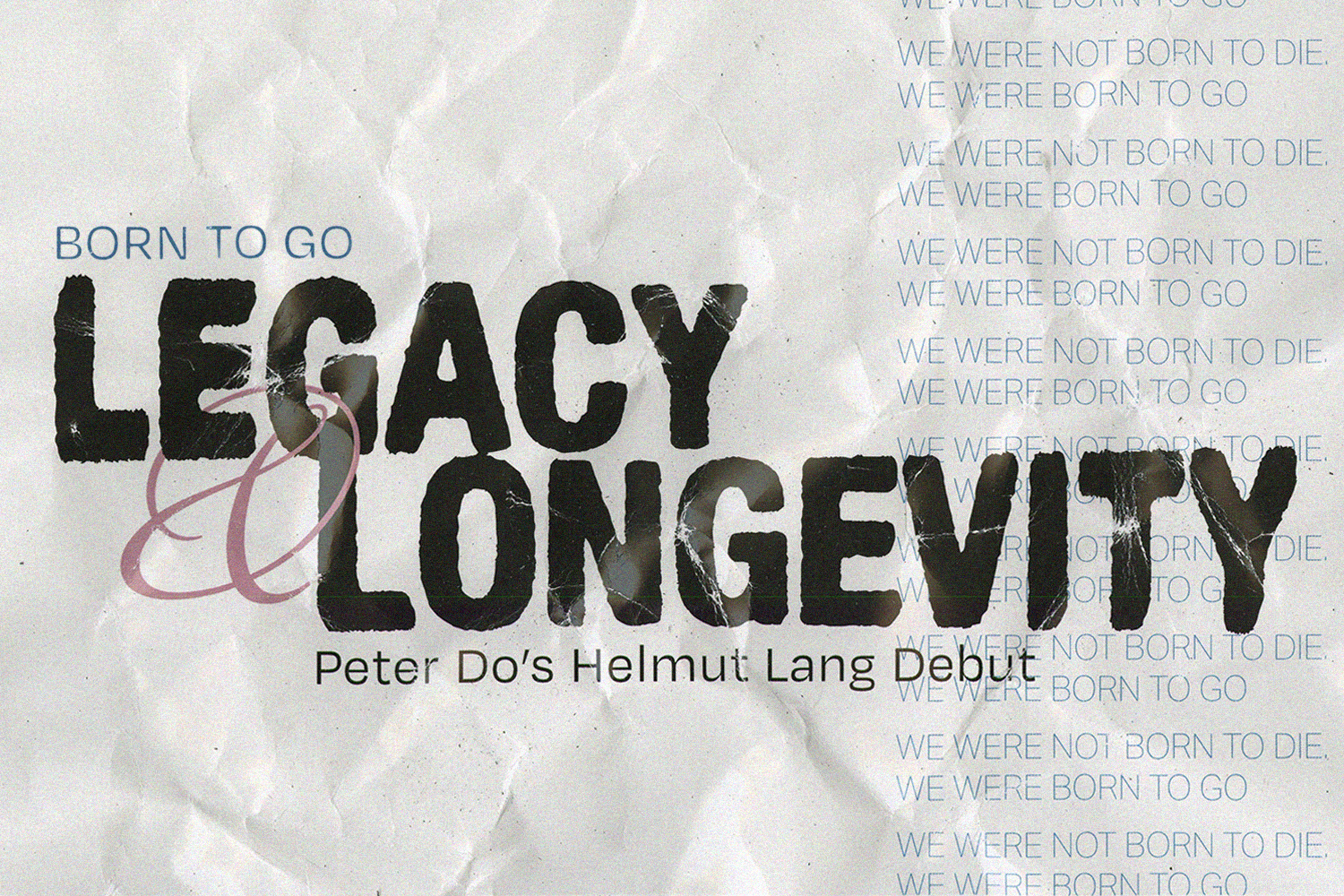On Friday, the 8th of September, 2023, Peter Do made his debut as the new creative director of Helmut Lang. The show garnered remarkable amounts of attention, and according to instagram user @databutmakeitfashion, the show has increased interest in the brand by 270%. To understand the significance of this debut, it is crucial to understand the magnitude of Helmut Lang’s legacy as a designer.
Lang began designing in the late 1970s in Vienna, showing his first collection at Centre Pompidou in Paris in 1986 before ultimately moving the brand to New York in the late 90s. He was responsible for fashion’s shift into minimalism in the face of 80s maximalism, tapering down from the larger-than-life designs, prints, and colors of the decade to a timeless and simplistic chic. His designs and approach to fashion were revolutionary, his use of unconventional and technologically advanced fabrics was groundbreaking, and his aesthetic had an immeasurable role in shaping generations of cool kids and critics alike.
Needless to say, Lang’s legacy left some mighty shoes for Peter Do to fill. Do himself is known for clean lines, clean tailoring and minimalism through his eponymous label, Peter Do. The FIT alum’s design style made the announcement of his appointment at Helmut Lang all the more exciting, and gave many people hope that he could reinvigorate the once groundbreaking brand.
For his inaugural collection with Helmut Lang, Do collaborated with fellow Vietnamese-American immigrant and New York City creative, Ocean Vuong—the award winning author of On Earth We’re Briefly Gorgeous. Vuong wrote a statement for the show about each of their upbringings, and the ways in which life led the two to one another. It was a beautiful glimpse into the collection, titled “Born to Go,” and introduced one of the central elements of inspiration that Do crafted the collection around: the car. As Vuong says, the car holds a larger significance for the queer community than a mere means to an end. It serves as both a vehicle for escape and as the destination. He refers to the collection as a joyride, and states “like all joyrides, there is nowhere to go but the going itself.”
This theme was tied into the collection from promotion to presentation, through the use of New York taxi top box advertising (a move first introduced by Lang himself in 1998), to the models’ movement across concrete floors during the show. Moving cars were used as print motifs throughout the collection and bands reminiscent of seat belts were strapped across select models’ chests and waists, complete with trims for stripes along the sides of some trousers. The show was an ode to New York, with the hustle and bustle of a NYC sidewalk felt through a screen, pulsating as the models walked past one another in every direction. Throughout the show, NYC subway announcements were interspersed between lines of Vuong’s poetry. The dichotomy created breaths of fresh air and self reflection in the midst of the fast pace of New York City.
The seatbelts felt less consistently successful. They added an interesting change to a classic style, but other times felt more randomly placed atop an otherwise complete ensemble. A strength of the collection was the fine, minimalistic tailoring with an eye for the details (in classic Peter Do fashion), including a stark white sleeveless button down with a large leather belt and crisp black trousers. Do also included sleek denim looks and metallic finishes — a nice nod to Lang’s styles and innovations from the 90s and early 2000s.
In addition to Vuong’s poem written across the floor of the venue, the collection also featured graphic tees, tanks, and button downs with his writing. The piercing lines, such as “when was the last time you were you?” also included some excerpts written in Vietnamese, which felt particularly moving as an Asian-American in fashion. That being said, the representation Do brought did feel tainted by the lack of size inclusivity amongst the models. Other looks, like the beige and yellow colorblocked set, fell a bit flatter and weren’t quite as sharp as I’ve come to expect from both Do and Helmut Lang.
Though Do’s debut did not feel as cutting-edge or sharp as the Helmut Lang that revolutionized fashion, it successfully set the stage and tone for collections to come. In an episode of “The Run-Through with Vogue,” Do stated that he intends to make sustainability and longevity key pillars of the brand, carrying over 60-70% of the body of each collection every season. It will be interesting to see where he takes this foundation next. Overall, despite mixed reviews, I remain optimistic on Do’s ability to carry the Helmut Lang brand forward and look forward to the next chapter of Peter Do’s Helmut Lang joyride.
Words and Graphic by Flora Medina.

